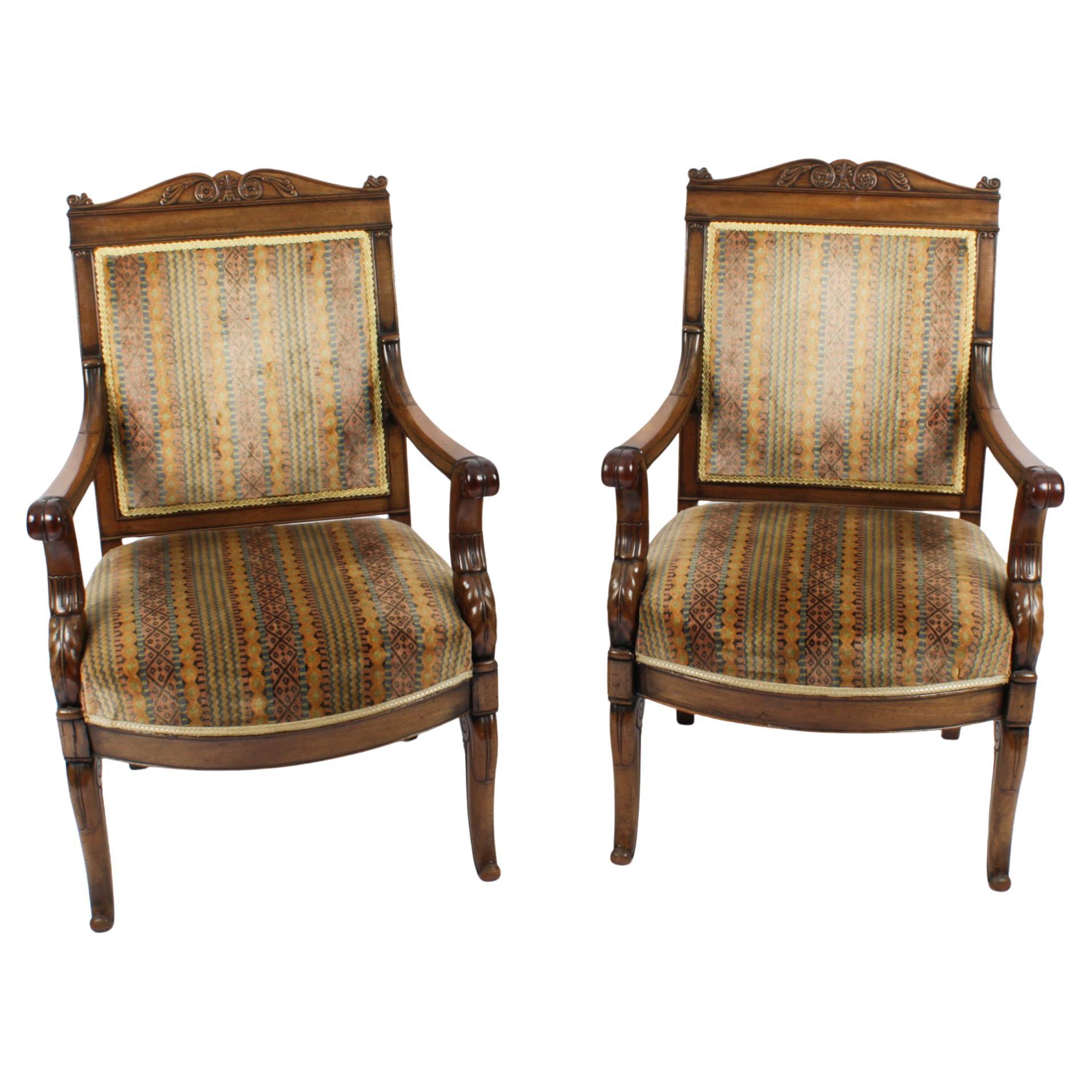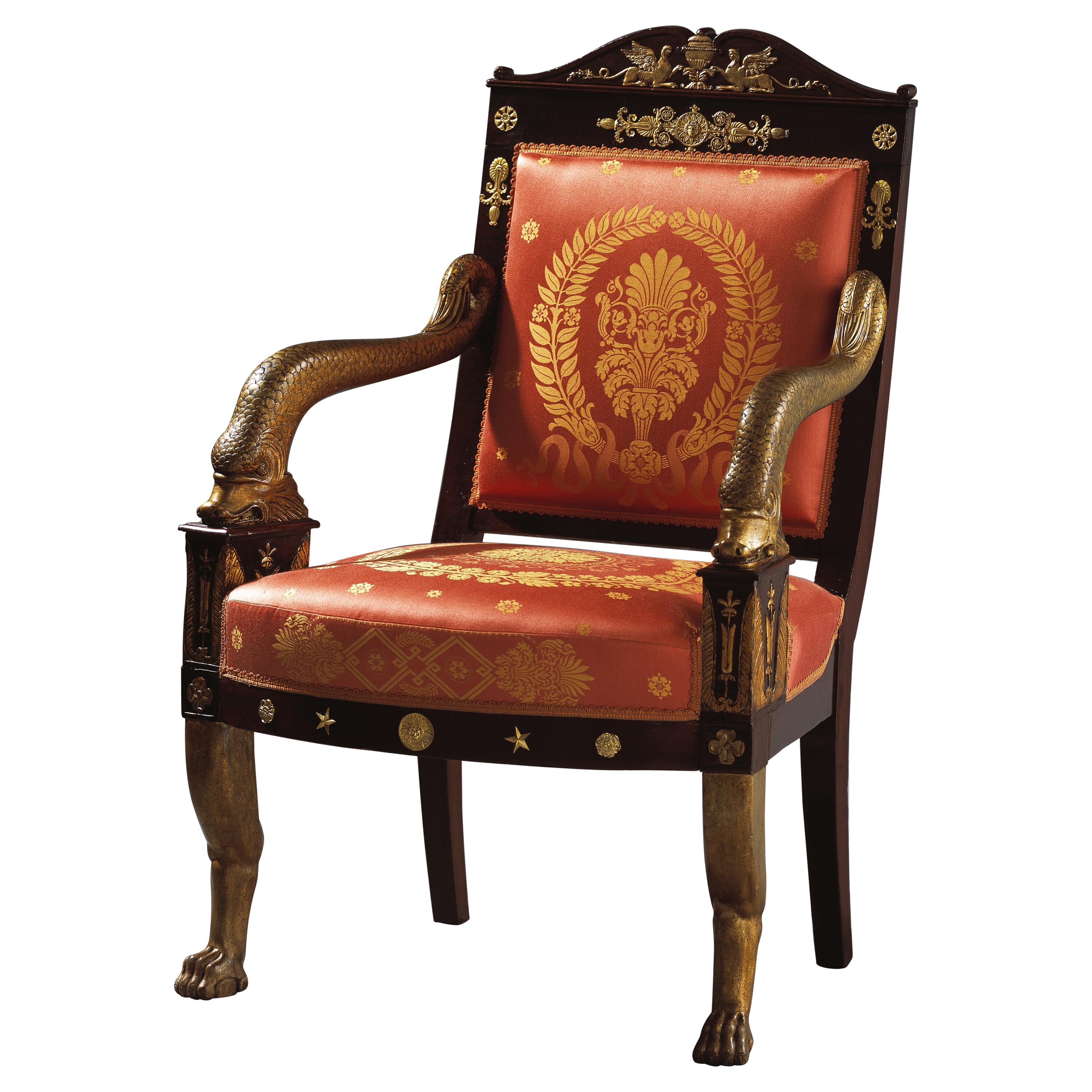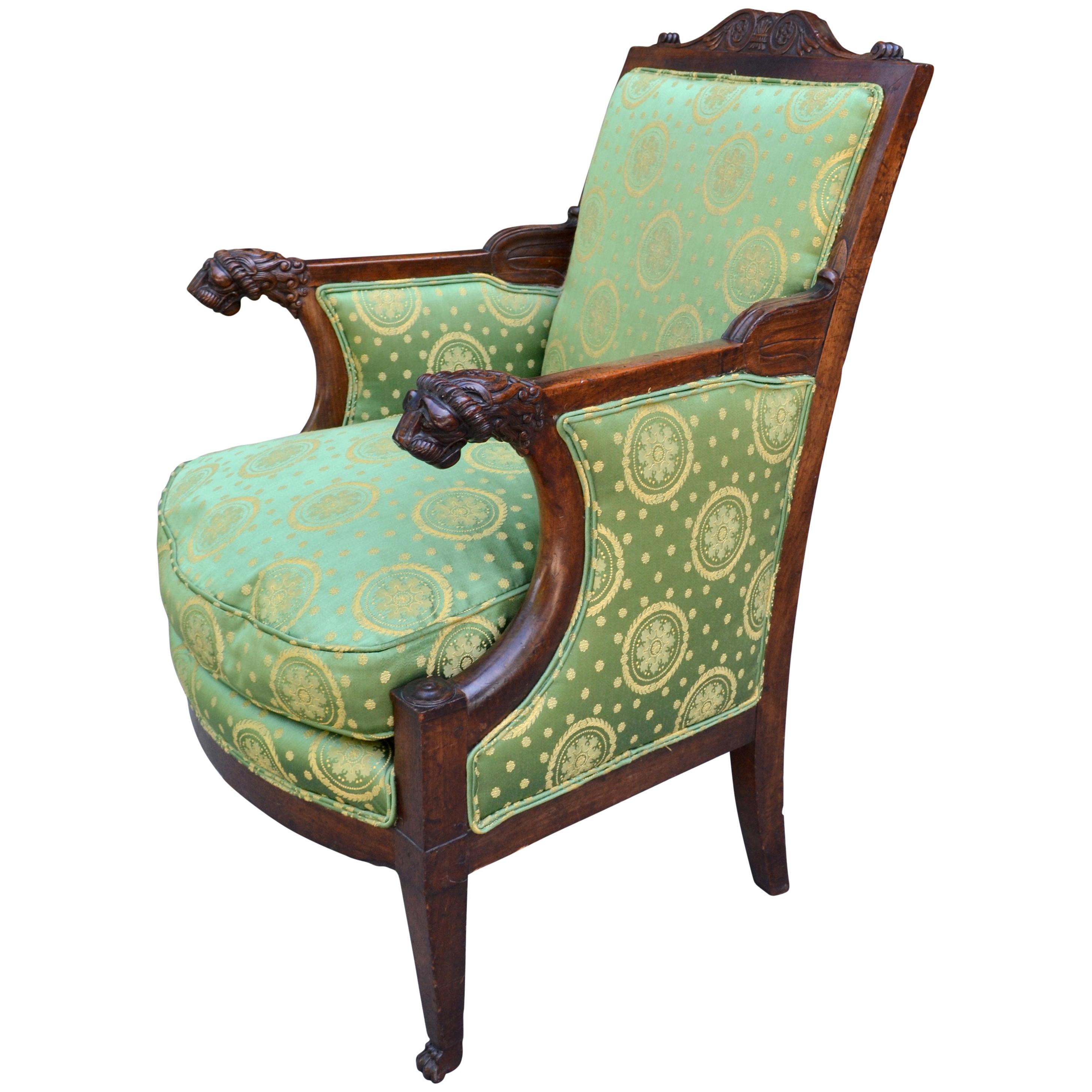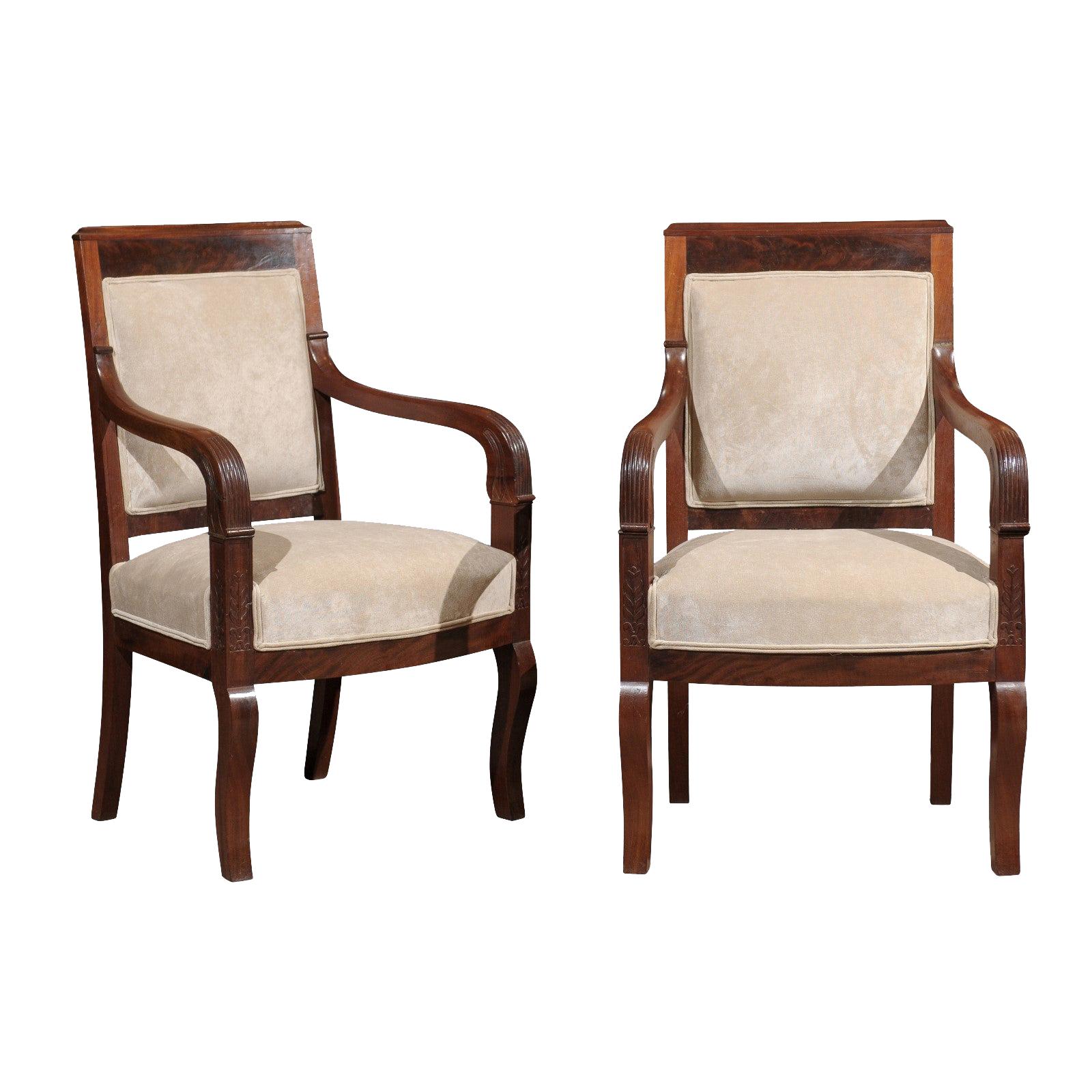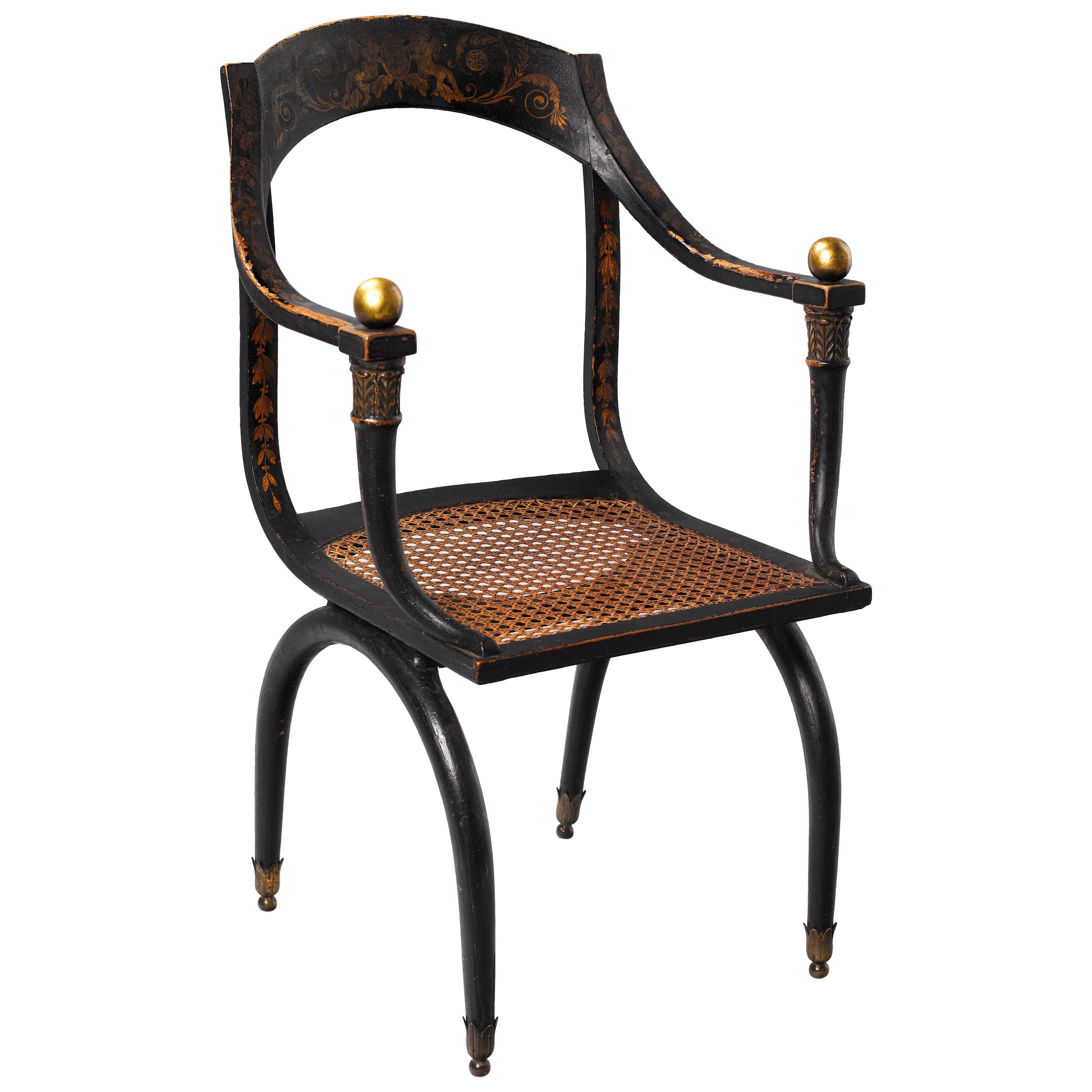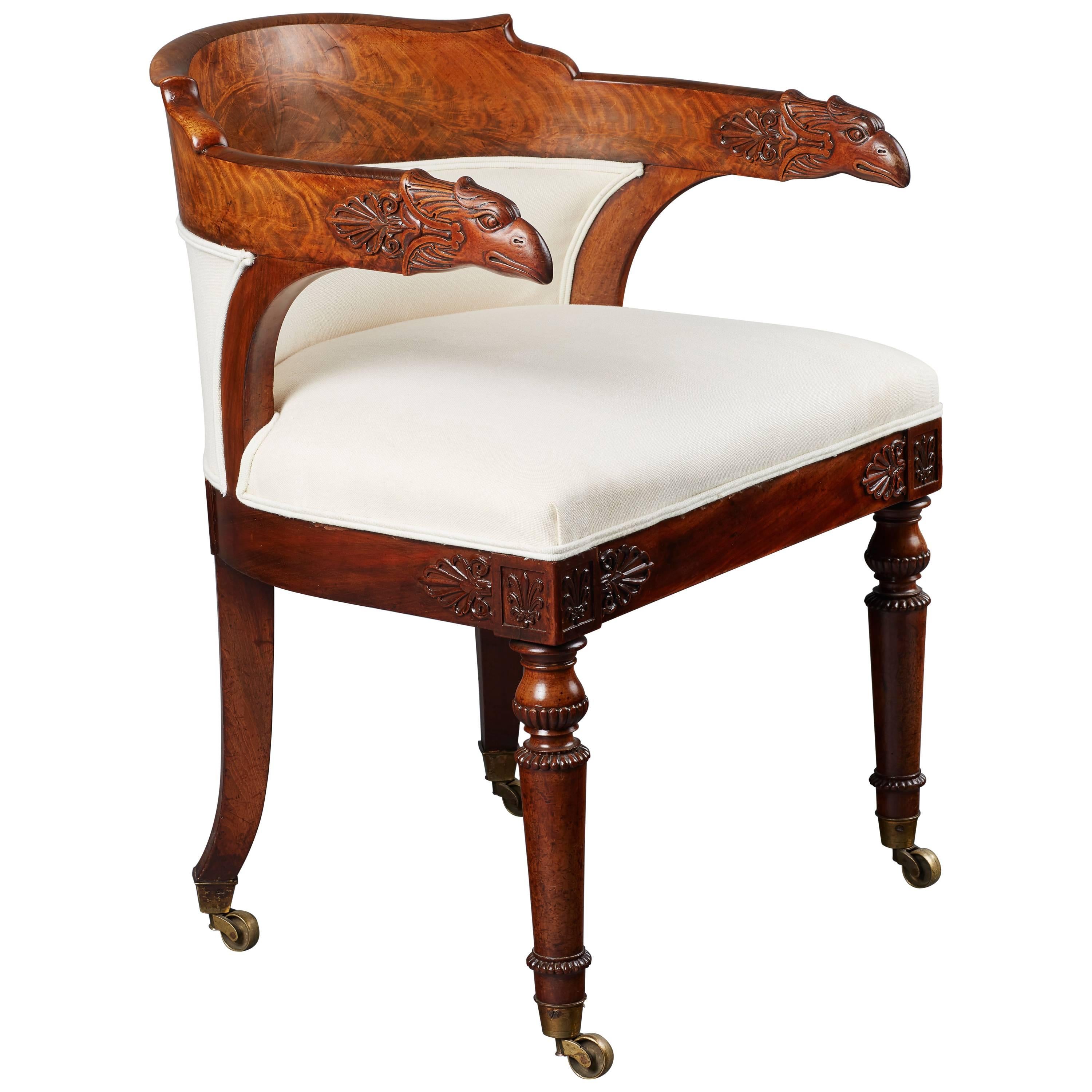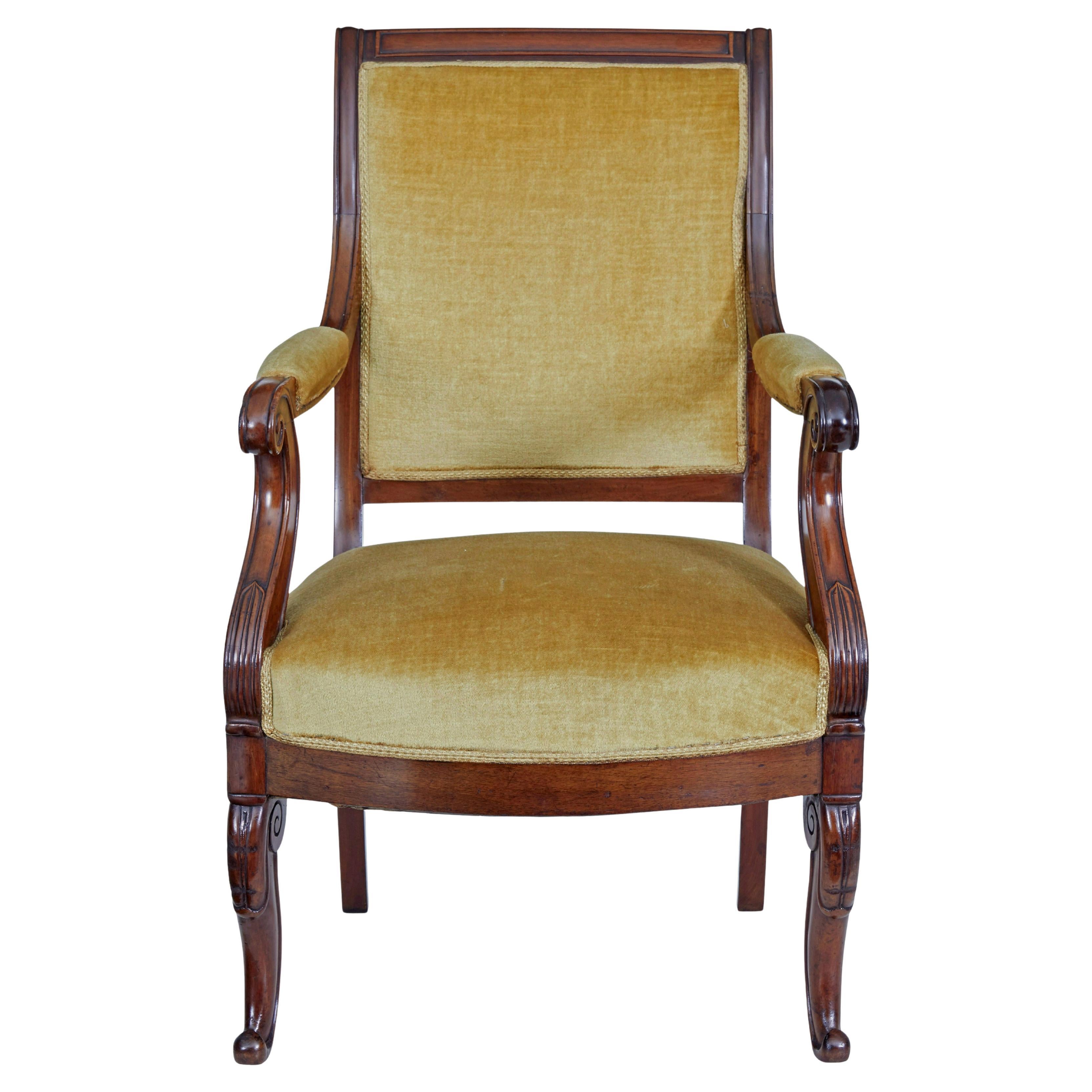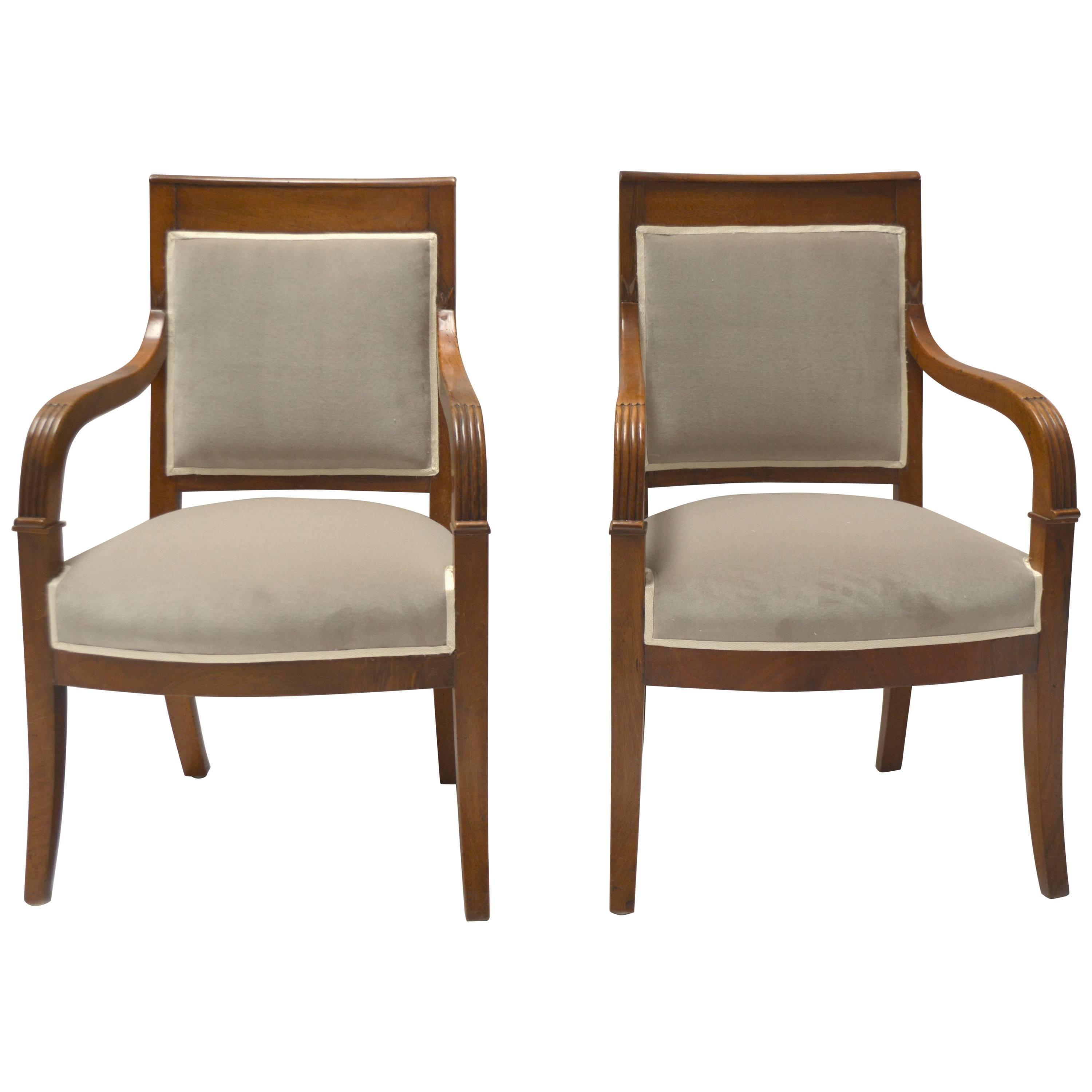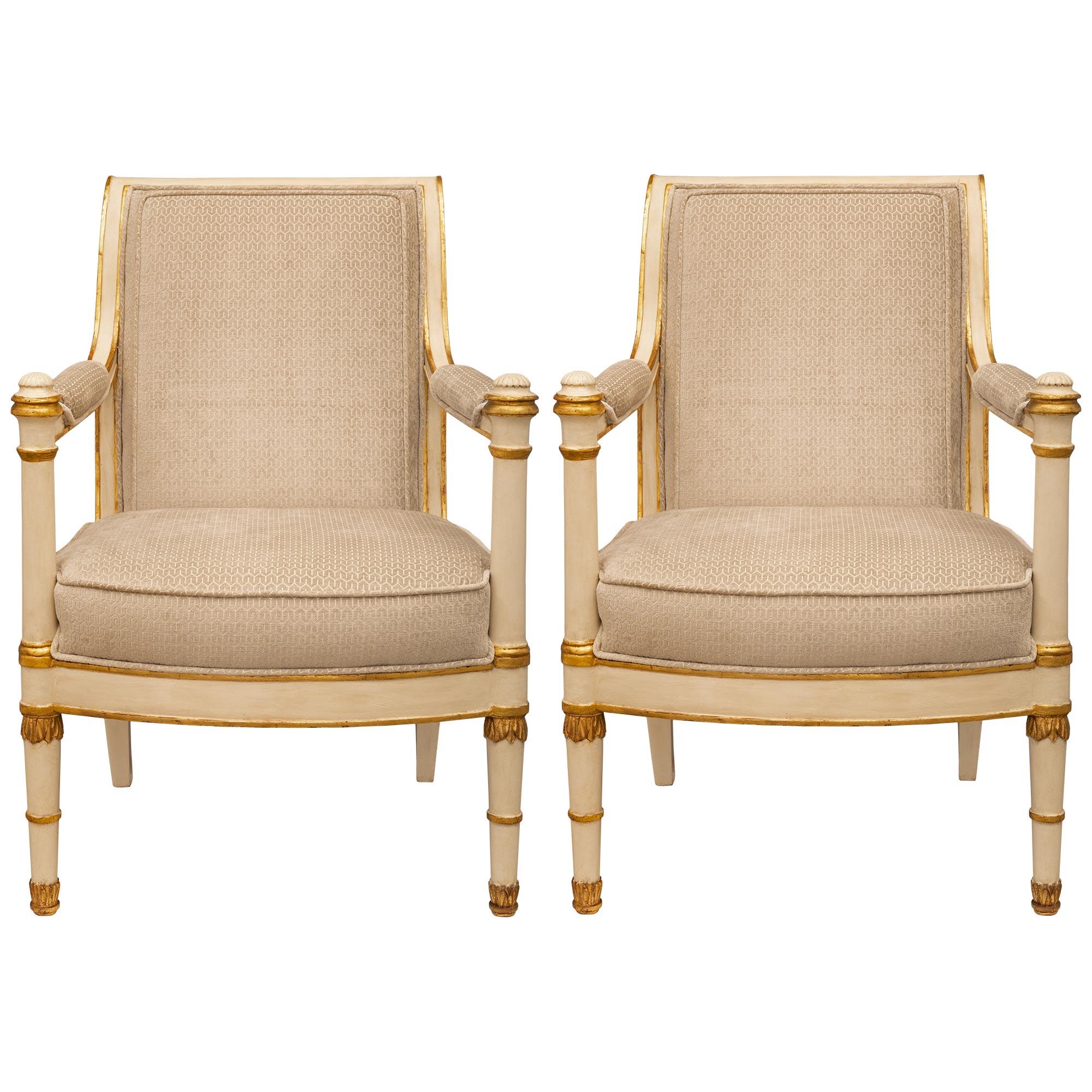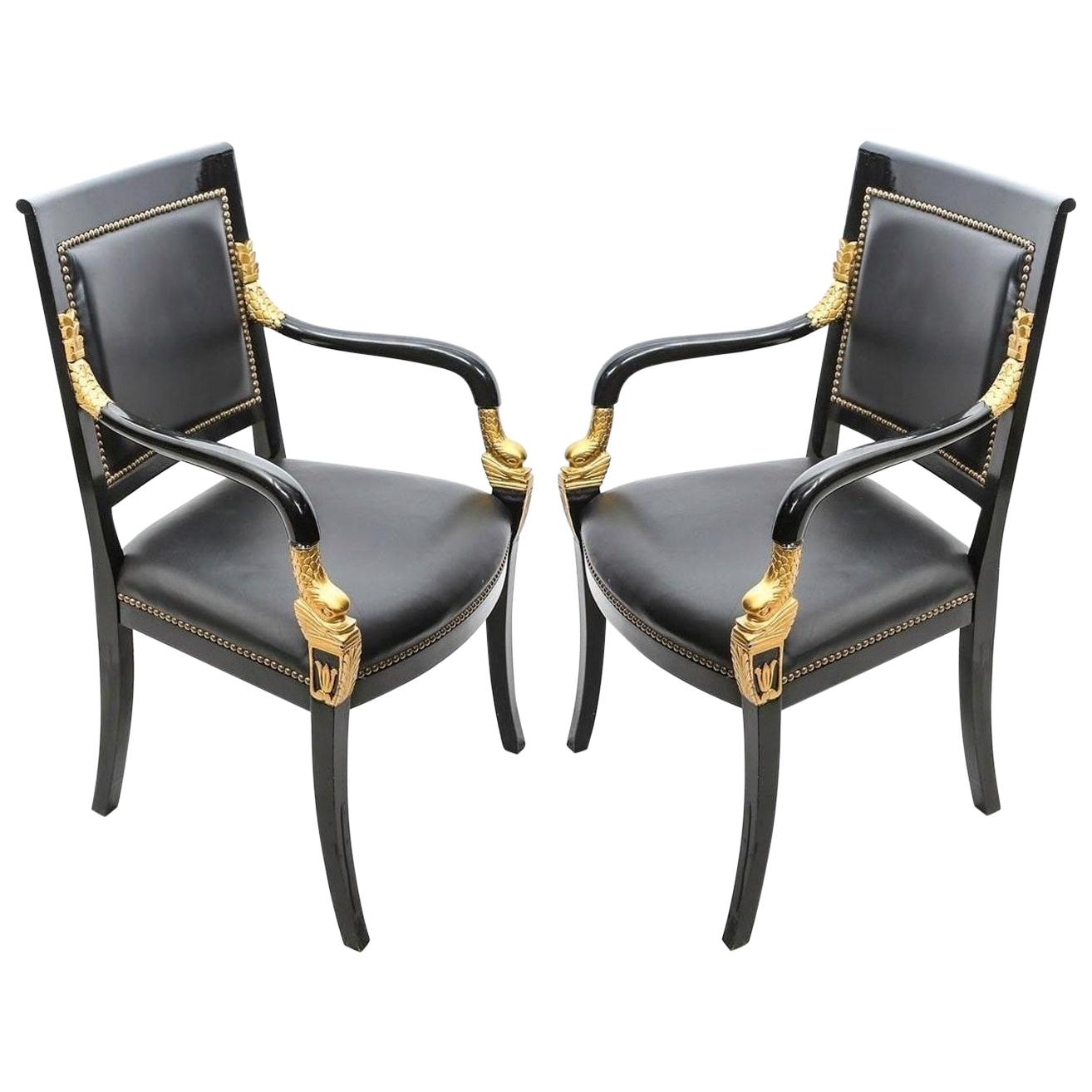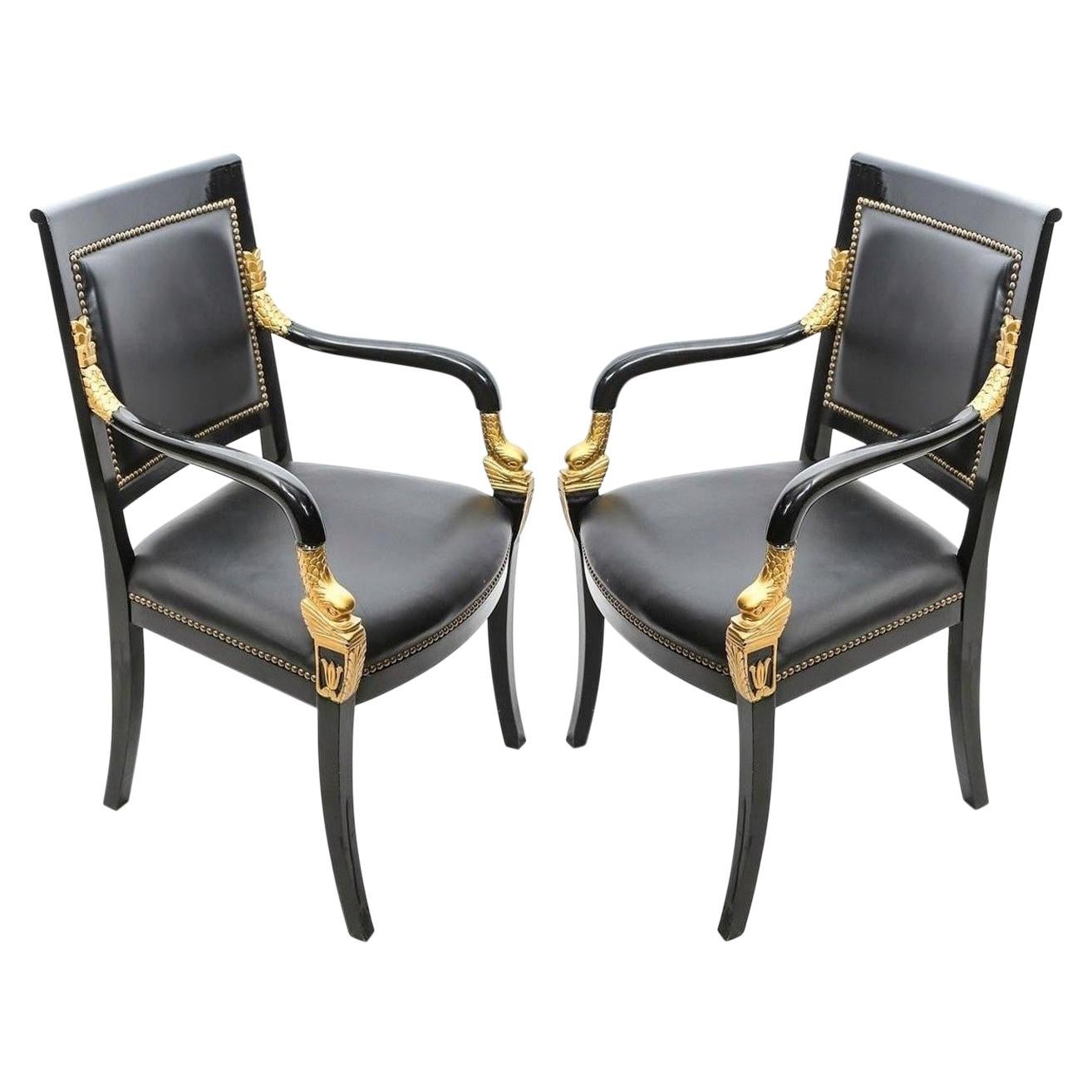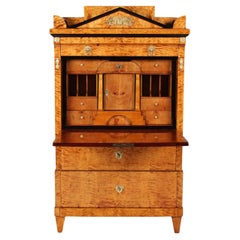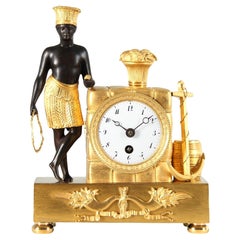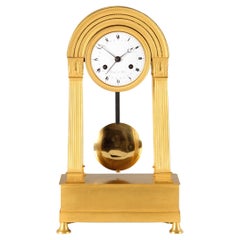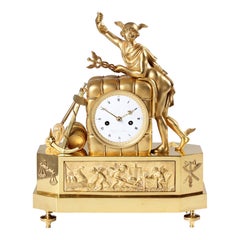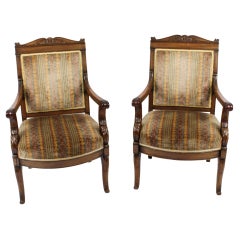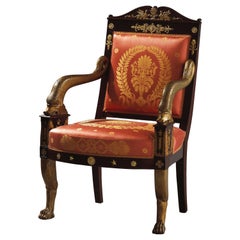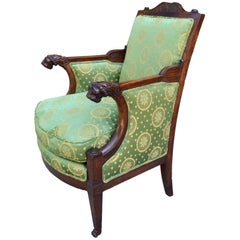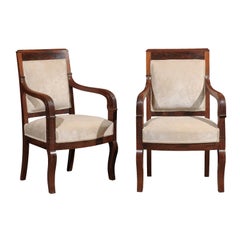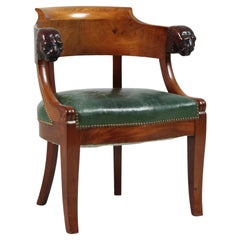
Early 19th Century French Empire Armchair, Fauteuil, Paris, circa 1815
View Similar Items
Want more images or videos?
Request additional images or videos from the seller
1 of 14
Early 19th Century French Empire Armchair, Fauteuil, Paris, circa 1815
About the Item
- Dimensions:Height: 30.32 in (77 cm)Width: 25.2 in (64 cm)Depth: 19.69 in (50 cm)Seat Height: 17.33 in (44 cm)
- Style:Empire (Of the Period)
- Materials and Techniques:
- Place of Origin:
- Period:
- Date of Manufacture:1810-1820
- Condition:Wear consistent with age and use. The armchair is in a well-kept condition with beautiful age patina.
- Seller Location:Greven, DE
- Reference Number:1stDibs: LU5419241440932
About the Seller
4.9
Vetted Professional Seller
Every seller passes strict standards for authenticity and reliability
Established in 2014
1stDibs seller since 2020
180 sales on 1stDibs
Authenticity Guarantee
In the unlikely event there’s an issue with an item’s authenticity, contact us within 1 year for a full refund. DetailsMoney-Back Guarantee
If your item is not as described, is damaged in transit, or does not arrive, contact us within 7 days for a full refund. Details24-Hour Cancellation
You have a 24-hour grace period in which to reconsider your purchase, with no questions asked.Vetted Professional Sellers
Our world-class sellers must adhere to strict standards for service and quality, maintaining the integrity of our listings.Price-Match Guarantee
If you find that a seller listed the same item for a lower price elsewhere, we’ll match it.Trusted Global Delivery
Our best-in-class carrier network provides specialized shipping options worldwide, including custom delivery.More From This Seller
View AllEarly 19th Century Biedermeier Empire Secretary, Germany, Prussia, C. 1815
Located in Greven, DE
North Germany / Prussia
Birch
Biedermeier / Empire around 1815
Dimensions: H x W x D: 174 x 102 x 55 cm
Description:
Very exclusive secretary from the Prussian North German Biedermeier period around 1815.
Piece of furniture standing on pointed legs with two drawers at the bottom, the writing flap above, another drawer above and a hidden head drawer at the very top.
The piece of furniture is veneered in exciting grained birch wood. Due to the different color hangings within the wood and the interplay of hues associated with it, we also refer to it as "flamed" birch.
The beautiful wood is complemented by blackened moldings and beautiful fire-gilded bronze hardware in beautiful quality.
The interior of the writing compartment is veneered in apple tree.
We see a stair-like rise to a central door flanked by pilasters. Drawers of different sizes and two large compartments with dividers for letters and papers complete the secretary part.
Looking at the piece of furniture from above, we see an old shipping label. According to it, the secretary was loaded onto the train at the station "Odertor" in Wroclaw. The destination was probably Berin. Corresponding mmarkings we find on the back panel.
Piece of furniture made in wonderful quality craftsmanship. A true testament to the high quality of Prussian furniture...
Category
Antique Early 19th Century German Empire Secretaires
Materials
Birch, Fruitwood
Early 19th Century Empire Clock, Miniature Matelot "Au Bon Sauvage", circa 1815
Located in Greven, DE
Miniature Empire Bronze Clock - Matelot
Paris
fire-gilded and patinated bronze
early 19th century
Dimensions: H x W x D: 18 x 14 x 9 cm
Description:
Very rare miniature of the famous Pendule Matelot "Au Bon Sauvage". The depiction deals with an important topic of the time, trade with the colonies.
The rectangular base stands on pressed ball feet. Attached to the front, we see two cornucopias filled with exotic fruits and held by a bow.
A young sailor, dressed in a raffia skirt and feather jewellery...
Category
Antique 1810s French Empire Mantel Clocks
Materials
Bronze
Early 19th Century French Empire Mantel Clock, Portal Pendule, Paris circa 1820
By Duval
Located in Greven, DE
Antique French round arch portal clock
France (Paris)
Bronze, enamel
Empire circa 1820
Dimensions: H x W x D: 47 x 26 x 12 cm
Description:
Very beautiful, strictly architecturally...
Category
Antique Early 19th Century French Empire Mantel Clocks
Materials
Bronze, Enamel
19th French Empire Mantel Clock, Pendule, Mercury, Gilded Bronze, circa 1815
Located in Greven, DE
19th century French pendule, mantel clock - Mercury the messenger of the gods
France
Bronze gilded
Empire around 1815
Dimensions: H x W x D: 37 x 30 x 10 cm
Description:
French Empire...
Category
Antique Early 19th Century French Empire Mantel Clocks
Materials
Bronze
$7,129 Sale Price
30% Off
French Empire Ormulu Bronze Mantel Clock, Lepaute, Thomire, Paris, circa 1815
Located in Greven, DE
Ormulu pendule with depiction of friendship and love
Paris (Lepaute, Thomire)
fire-gilt bronze
Empire around 1815
Dimensions: H x W x D: 44 x 36 x 13 cm
French pendulum movement with eight days duration. Thread suspension and lock disc striking movement with strike on bell on the half and full hour.
White enamel dial with Roman hour numerals and Breguet hands.
Signature: LePaute & Fils / Hrl. du Roi (Pierre-Basile Lepaute (1750 - 1843) with his son Pierre-Michel Lepaute (1785-1849); from 1811 in joint workshop).
Description:
The extremely high quality pendulum shown here takes up a profound theme: Friendship, which combines with love and can thereby outlast time and death. As it is typical for the epoch of classicism, personifications and symbols are taken from the fund of ancient mythology and art and then developed further.
The main figure is a young woman in an antique, girded garment, standing barefoot and with crossed legs next to an altar, on which she is leaning with her left elbow. She gracefully bows her head towards a tempestuously approaching Cupid, grasps his right hand with her left and draws him to her bosom, the seat of the heart. The delicate ambivalence of flying towards and being held culminates in the trustingly intimate look that the two cast at each other.
The young woman personifies friendship, the winged Cupid love. As a sign of their intimate connection, two burning hearts appear on the altar next to the two, framed by the puffed scarf, which are closely bound together by a chain of flowers.
Next to them, on the altar slab, one can see an erected book with the title "Amitie" (French: amitie, friendship). Supporting the book is a pomegranate held by a ring of pomegranate flowers. The bursting seeds spill out of the cracked skin. Since ancient times, the pomegranate and its blossoms have been dedicated to the goddess Persephone, symbolizing the underworld and death, but also life and fertility. The myrtle interwoven in the pomegranate flower wreath of "friendship" also has a far-reaching symbolic power: the plant was dedicated to the goddess Aphrodite, stands for virginity, and was and is therefore obligatory in the bridal wreath...
Category
Antique Early 19th Century French Empire Mantel Clocks
Materials
Bronze, Enamel
Large Early 19th Century Empire Chest Of Drawers, Mahogany, Ormolu, Paris, 1810
Located in Greven, DE
Large Empire chest of drawers
Paris
Mahogany
Early 19th century
Dimensions: H x W x D: 97 x 136 x 68 cm
Description:
The architecturally designed front of the chest of drawers is divided into three zones.
A plinth connected to the floor forms the lower section, on which two sturdy columns rest, supporting the upper section, which houses a large drawer. Three further drawers are housed in the centre section of the chest of drawers, which recedes behind the columns.
A black granite top forms the upper end.
The drawers, the back panel and the body are made of oak, except for the panels in the side walls.
The top section with the ledge drawer is connected to the body with wooden wedges and can be removed for transport. This detail can be clearly seen in one of the photos.
Exquisitely beautiful mahogany veneer, horizontally mirrored on the drawers at the height of the key entrances, enlivens the smooth surfaces on which the lavishly gilded bronzes unfold their effect.
Some of the very finely crafted fittings can also be found on Empire furniture by Jacob...
Category
Antique Early 19th Century French Empire Commodes and Chests of Drawers
Materials
Bronze, Ormolu
You May Also Like
Antique Pair French Empire Armchair Fauteuils Chairs, 19th Century
Located in London, GB
This is an elegant antique pair of French Empire Revival upholstered back mahogany armchair fauteuils, circa 1880 in date.
The mahogany is beautiful in colour with superb patina. Th...
Category
Antique 1880s French Empire Armchairs
Materials
Mahogany
Important French Empire Early 19th Century Armchair
By Jacob-Desmalter
Located in Worpswede / Bremen, DE
An impressive Napoléonic Empire mahogany armchair, attributed to Jacob-Desmalter (1770-1841). With a pedimented top rail above a rectangular padded back and seat covered in red and g...
Category
Antique Early 19th Century French Empire Armchairs
Materials
Bronze
$17,943 Sale Price
20% Off
Early 19th Century French Empire Mahogany Armchair
By François-Honoré-Georges Jacob-Desmalter
Located in Vancouver, British Columbia
A period French Empire mahogany armchair with carved lion heads to the arms and lion's paw feet to the legs, upholstered in French Emp...
Category
Antique Early 19th Century French Empire Armchairs
Materials
Mahogany
$3,500 Sale Price
50% Off
Pair of French Empire Mahogany Fauteuils, 19th Century, circa 1810
Located in Atlanta, GA
Pair of French Empire Mahogany fauteuils, 19th century, circa 1810. 3 pairs available.
Category
Antique Early 19th Century French Empire Chairs
Materials
Mahogany
Two French Empire Armchairs, 19th Century
Located in Traversetolo, IT
Fine quality French Empire cherrywood armchairs.
Carved arms in shallow relief with acanthus leaves, elegant saber legs, beautiful patina color.
To coat however you like.
Category
Antique 1820s French Empire Armchairs
Materials
Cherry
$2,314 Sale Price / set
37% Off
Important Empire Early 19th Century Fauteuil by Jean-Joseph Chapuis
By Jean Joseph Chapuis
Located in Worpswede / Bremen, DE
Despite his long life, very little is known about the general production of menuisier (chairmaker) Jean-Joseph Chapuis (1765-1864) and even less about his use of bent laminates, which must be viewed as the most advanced of its kind until the appearance of Michael Thonet’s work of the 1830s.
The profound reverence for the classical world in enlightened circles in early 19th century Europe and the United States often resulted in the archaeological resurrection of the art, architecture, and design of ancient Greece and Rome. No chair employing the innovative technique of bending wood more boldly expresses this allegiance to the past than this armchair painted in le style antique and based on the ancient Roman sella...
Category
Antique Early 19th Century Belgian Empire Armchairs
Materials
Cane, Bentwood
Recently Viewed
View AllMore Ways To Browse
Italian Service Platters
J Shaped Couch
Jack Lenor Larsen 1960
Jacob Hermann
Jade Stone Trees
Janus Chair For Dunbar
Janus Sofa
Japanese Ceramic Tray
Japanese Majolica
Japanese Porcelain Plaque
Japanese Rocking Chair
Japanese Teak Stool
Jelly Bowl
Jens Quistgaard Danish Modern Teak Ice Bucket
Jensen Cypress Sterling
Jindrich Halabala Dining Chair
Jl Moller Teak Dining Chairs
John Stuart Chrome
